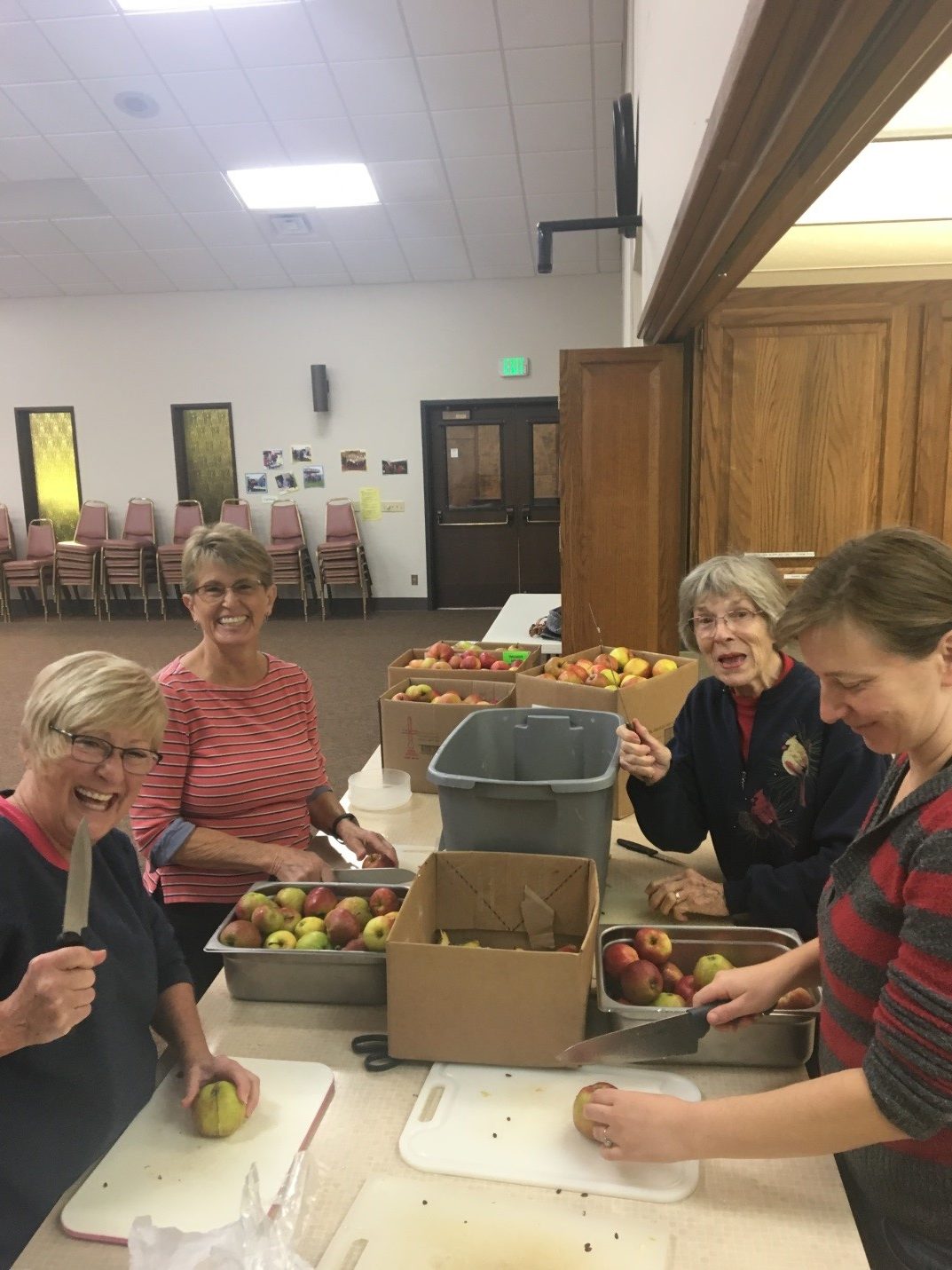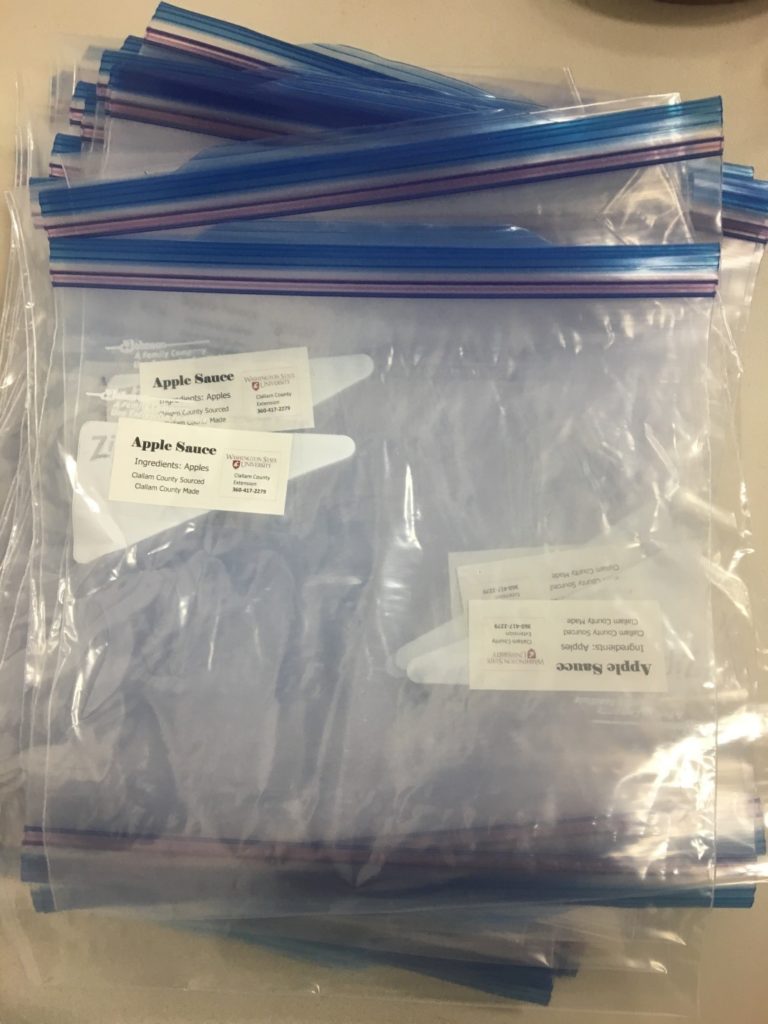
Glean Processing – The Ins and Outs of Setting Up Processing Events
31 Dec 2019, by Admin in Harvest Blog, Harvest VISTA, Gleaning, Washington state, WSU Extension Clallam CountyHarvest VISTA Benji Astrachan serves at the WSU Clallam County Extension in Port Angeles, WA. Building off of the highly successful VISTA-founded Clallam Gleaners program, Benji is in the first year of research and development of a glean processing program that will capture excess gleaned produce to process into shelf-stable items. By donating these processed items back to the food banks, food waste can be diverted into delicious food products, food banks can cut disposal costs and save valuable storage space and community members can learn new food preservation skills while working to increase access to local and healthy foods. Benji is launching a community meal program to teach cooking skills and increase access to healthy meals while coordinating with the Hot Foods Recovery Program to save prepared foods from landfills. Through these projects, Benji and the WSU Extension seek to educate and empower the local community through increasing knowledge and access, while reducing food insecurity and waste in Clallam County.
Paperwork begets paperwork. Particularly if you want to have all your bases covered with local government. This was Harvest VISTA Benji Astrachan’s experience with developing a glean processing event, and while it was tedious, the end result is worth it.
Benji is the first year VISTA in Port Angeles, WA and has been researching and implementing a program that will capture excess gleaned produce and prevent waste by processing it into more shelf-stable items. In practice, the answer lay in apple sauce, as gleaning data revealed apples to be the most gleaned crop in Clallam County – three times more than pears, which were the second-most gleaned crop. For food banks, the Boys and Girls Club, senior centers, local schools, and many other donation-receiving organizations, this held true – everyone had more apples than they knew what to do with, particularly given the lack of proper cold storage facilities available on the Peninsula.
Benji went about setting up a glean processing event to make applesauce to donate back to the local Food Bank, but the process of setting up the event was quite an ordeal compared to the relatively simple act of applesauce production.
The first step was to ensure food banks were interested in the end result. This required figuring out how distribution would go down with the applesauce, where storage until distribution could be found, and what was needed for labeling to inspire folks to take home a container of mystery brown mush. (Unsurprisingly, the final label did not include the words ‘mystery brown mush’.)
Then, a kitchen needed to be found. In order to keep the program sustainable, Benji searched high and low for a free kitchen that would at least meet some of the basic needs for processing, and eventually was able to get the use of a local church kitchen donated for the sake of feeding the needy. Luckily this kitchen already held a commercial permit with the Environmental Health office (or else that would’ve kick-started a whole new process to get a Donated Food Distributing Organization permit. Don’t you regret having asked about paperwork details?!) Benji then applied for, and eventually obtained a Temporary Food Permit, and had a productive discussion with the Food Safety officer about the process and facilities. It was decided that, because of the lack of adequate refrigeration to cool sauce within the needed timeframe, the applesauce would be put into gallon bags and packed between ice before moving to the food bank freezers, in order to keep the sauce out of the temperature danger zone (beware!).
After having assembled many apples (an easy task in Clallam County in late fall), Benji and the Gleaning Program coordinator and former Harvest VISTA Sharah were finally ready to make apple sauce. With a handful of volunteers from the Gleaning Program and the Sequim Food Bank, they spent a day washing and chopping apples, steaming them in large pots, cooling them in ice baths, and then milling them through a food mill into smooth applesauce which was bagged and cooled further. Luckily, most of the volunteers were home preservers and had many good tips to speed up and simplify the process from their own experiences.
By the end, over 200 lbs of apples were converted into 55 lbs of applesauce in 1 lbs freezer bags, which were donated to the Sequim Food Bank to redistribute to clients. Those picking it up were reportedly excited to see homemade applesauce on offer, particularly families with kids. That is precisely the goal, and Benji and Sharah were happy to have a good result come from all the logistics and permitting that went into making sure the event happened safely and legally on all accounts.
Benji is now creating a guide, with the hopes that future VISTA’s and community groups can take these steps and run with them, and start processing all sorts of excess gleaned produce into delicious and nutritious food items that’ll make it a bit easier for food banks and their clients to get good local foods. He’s hoping that future VISTA’s will find ways to make the process easier and less paperwork-intensive, particularly for community organizations, faith groups, civic groups and others who are looking for ways to get involved and help out. Although daunting from the outset, Benji learned much about the process and how it can be easier for those to come, in the hopes that we can all do better at preventing food waste and making local produce more accessible to the many people in our communities in need.



